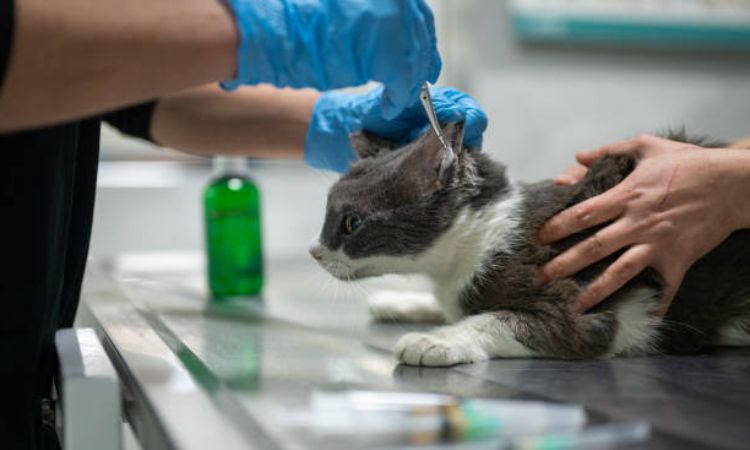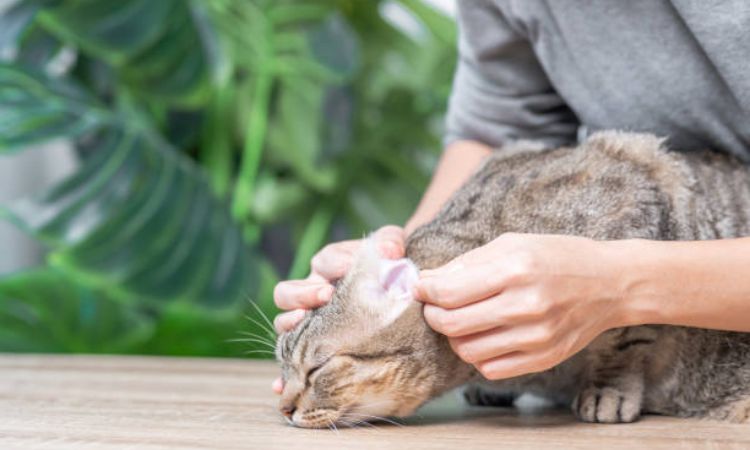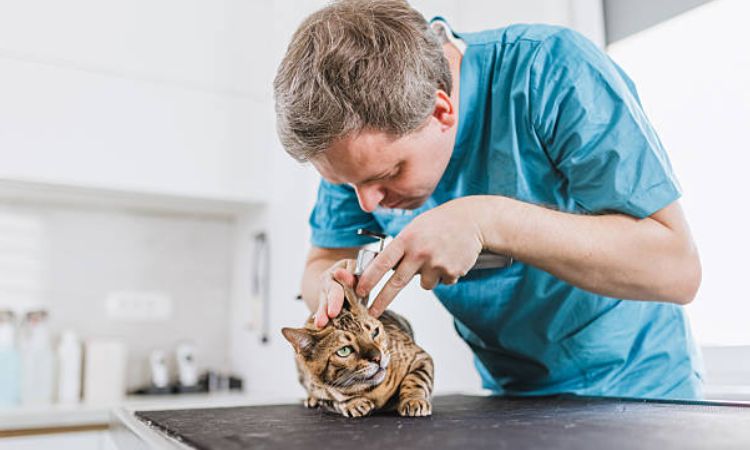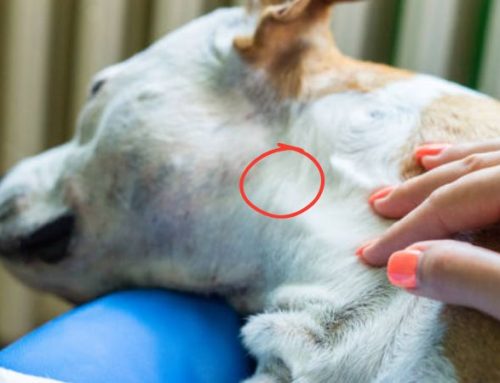Ear infections aren’t especially common in cats, but when they do happen, they can be tricky and often signal something more than just a simple irritation. If your cat has been shaking their head, scratching at their ears, or acting a little off, it’s worth taking a closer look.
In this article, Nexus-Pets walks you through the signs of ear infections in cats, what causes them, how they’re treated, and when it’s time to call your vet.

Causes of Cat Ear Infections
Ear infections in cats may not be as common as in dogs, but when they occur, they often stem from an underlying issue rather than arising spontaneously. Understanding the root causes is crucial for effective treatment and prevention.
- Ear mites are among the most frequent culprits, especially in kittens. These tiny parasites are highly contagious and can easily spread between cats through close contact. They cause intense itching and inflammation, often leading to secondary infections if left untreated.
- Yeast infections can develop when the natural balance of microorganisms in the ear is disrupted. Warm, moist conditions—sometimes triggered by other infections or allergies—create the perfect environment for yeast to overgrow.
- Bacterial infections may occur on their own or as a secondary result of other underlying issues like mites or allergies. These infections can be painful and may produce foul-smelling discharge.
- Allergies—whether environmental, food-related, or contact-based—are a common underlying factor in recurring ear infections. Allergic reactions can inflame the ear canal and increase susceptibility to infection.
- Other less common causes include ear wounds, foreign bodies (like grass seeds or dirt lodged in the ear), and nasopharyngeal polyps, which can obstruct drainage and create an environment conducive to infection.
Identifying the exact cause is essential, as treatments vary depending on the underlying issue. A thorough examination by a veterinarian, often including ear swabs and microscopic analysis, is the first step toward relief and recovery.
Common Signs and Symptoms of Cat Ear Infections
Ear infections in cats often develop quietly at first, but as the condition progresses, both physical and behavioral signs become more noticeable. Paying attention to these changes can help catch the problem early and prevent complications.
Visible signs in and around the ear
- Unusual discharge is one of the most recognizable indicators. This may appear black, brown, yellow, or resemble coffee grounds—often a sign of ear mites or infection.
- Redness, swelling, or warmth of the ear flap (pinna) or ear canal may indicate inflammation.
- Waxy buildup or crusts can develop as the infection progresses.
- A strong, foul odor coming from the ear is common in bacterial or yeast infections.
- Scratches or scabs around the ear may appear due to constant itching or self-trauma.
Behavioral signs
- Excessive scratching or pawing at the ears is a common reaction to irritation or pain.
- Head shaking or tilting, or a cat holding their head to one side, can signal discomfort or inner ear involvement.
- Irritability or head shyness may appear if your cat becomes sensitive to being touched near the ears.
- In some cases, hearing loss or muffled hearing may occur due to swelling or debris blocking the ear canal.
- More serious or deep-seated infections can cause loss of balance, disorientation, or difficulty walking, especially if the inner ear is affected.
These symptoms vary depending on the severity and underlying cause of the infection. If you notice one or more of these signs, especially if they persist or worsen, it’s important to consult a veterinarian for a proper diagnosis and treatment plan.

Treatment Options for Cat Ear Infections
Managing ear infections in cats requires a combination of veterinary care, appropriate medication, and diligent home treatment. The specific approach depends on the underlying cause, severity, and whether the infection is acute or chronic.
Initial Cleaning and Fur Trimming
Before any medication is applied, your veterinarian may gently clean your cat’s ears to remove debris, discharge, or crusty buildup. In some cases, trimming the fur around the ear canal is recommended to improve airflow and allow treatments to penetrate more effectively. This step not only eases discomfort but also helps prevent further contamination.
Medications Tailored to the Cause
Once the underlying trigger is identified, targeted medications are prescribed:
- Anti-parasitic treatments are essential if ear mites are present. These usually come in the form of topical solutions or spot-on treatments and often require treating all pets in the household due to the mites’ contagious nature.
- Antifungal medications are prescribed when yeast overgrowth is detected. These typically come as ear drops or ointments formulated to restore microbial balance and soothe inflammation.
- Antibiotics, either in topical drop form or systemic (oral/injectable) when the infection is deep or severe, are used to address bacterial involvement. Early use can prevent complications like hearing loss or chronic pain.
- Corticosteroids may be recommended in cases of recurring or long-standing inflammation. These help reduce swelling, relieve itchiness, and prevent tissue damage caused by persistent scratching.
At-Home Care and Monitoring
Your vet will provide instructions on how to apply ear drops correctly—typically by gently holding your cat, lifting the ear flap, and delivering the medication directly into the canal while avoiding contact with the applicator tip. It’s essential to finish the full course of treatment, even if symptoms appear to improve early.
Regular monitoring at home is just as important. Keep an eye on your cat’s behavior, appetite, and signs of discomfort. If symptoms persist or worsen, follow-up visits may be necessary to adjust the treatment plan.
Surgical Intervention (in Rare Cases)
Although uncommon, surgery may be needed if the infection is caused by polyps, tumors, or severe structural damage within the ear. This is typically considered only when medical treatments fail or complications such as chronic blockage or hearing loss develop.

When to Worry: Serious Symptoms and Complications
While many feline ear infections are mild and respond well to treatment, certain signs signal a more serious underlying issue that requires immediate veterinary attention. Delaying care in these cases can lead to irreversible complications.
One of the most concerning indicators is the presence of neurological symptoms, which may point to an infection that has spread beyond the outer ear into the middle or inner ear. Cats may exhibit a head tilt, loss of balance, or abnormal, rapid eye movements (nystagmus). These signs suggest that the infection is affecting the vestibular system, which controls balance and spatial orientation.
Another red flag is the recurrence or persistence of ear infections, even after appropriate treatment. Chronic ear conditions may be driven by underlying factors such as allergies, anatomical abnormalities, or immune dysfunction, and can gradually cause structural damage if left unmanaged.
If untreated or poorly managed, ear infections can lead to serious complications. These include permanent damage to the ear canal, partial or total hearing loss, and in severe cases, facial nerve paralysis, which can cause drooping of the eyelid or lips on the affected side. Such outcomes not only impact your cat’s quality of life but may also require long-term medical or surgical intervention.
A cat’s healthy ears are crucial for their overall happiness. By remaining vigilant for signs of ear infections, understanding their potential causes, and promptly seeking veterinary care when necessary, you can effectively prevent serious complications and ensure your feline friend stays comfortable.






